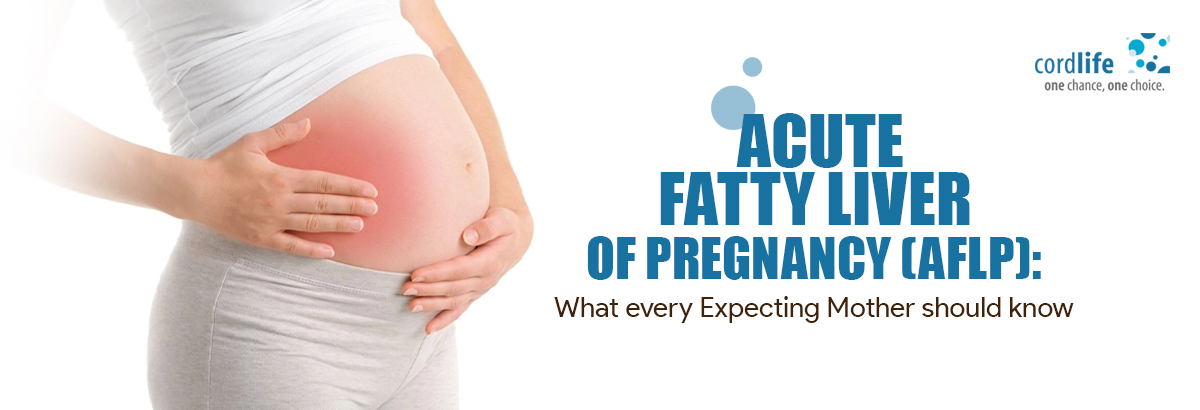Table of Contents
- What is Acute Fatty Liver of Pregnancy?
- What are the Symptoms of Acute Fatty Liver of Pregnancy?
- What are the Causes of Acute Fatty Liver of Pregnancy?
- Effects of Acute Fatty Liver of Pregnancy on the Mother and the Baby
- How is Acute Fatty Liver of Pregnancy Diagnosed?
- Treatment of Acute Fatty Liver of Pregnancy
- Conclusion
Acute fatty liver of pregnancy (AFLP) presents a host of physical, emotional, and medical challenges for the expectant mother. This medical condition usually occurs during the final three months of pregnancy or shortly after the baby’s birth. With vague early indications that can easily be overlooked as normal pregnancy symptoms, this disease is difficult to diagnose in its early phase. The condition can often lead to complications like liver failure and multi-organ dysfunction in the mother, and even cause fetal distress and maternal or foetal death.
What is Acute Fatty Liver of Pregnancy?
Acute fatty liver of pregnancy (AFLP) is a rare yet critical medical condition that is usually detected in the third trimester, between weeks 30 to 38 of gestation, or in the immediate postpartum period. Characterised by maternal liver failure, this is a severe liver dysfunction due to fatty infiltration of the liver parenchyma, the functional tissue of the liver, which can cause coagulopathy, electrolyte imbalance, and multi-organ failure. To put it in simple terms, the unique pattern is that microvesicular steatosis (fatty infiltration) in the liver takes place without significant inflammation or necrosis. Early detection and treatment are essential to manage unfavourable outcomes. However, the symptoms of this disease are not pronounced and can often be overlooked until it’s too late.
What are the Symptoms of Acute Fatty Liver of Pregnancy?
Symptoms of AFLP during pregnancy can vary, and it is not uncommon to overlook early non-specific symptoms such as nausea, vomiting, loss of appetite, pain in the upper right quadrant of the abdomen, headache, fatigue, and malaise as typical discomforts of pregnancy. As maternal liver failure worsens, more severe symptoms like jaundice, confusion, ascites, liver malfunction, impaired kidney function, acute renal failure, hepatic encephalopathy, and coagulopathy can develop. Elevated liver enzymes in pregnancy are often seen in patients with Acute Fatty Liver of Pregnancy. Jaundice during pregnancy, especially in the third trimester, is a concerning sign of AFLP that requires immediate medical attention. Complications such as pre-eclampsia or HELLP syndrome require prompt and specialised treatment. Early diagnosis and timely delivery are crucial for the well-being of both the mother and the baby.
What are the Causes of Acute Fatty Liver of Pregnancy?
When asked what this condition is, it may simply be asserted that it is a distinct, acute, and life-threatening condition unique to gestation. The causes are not clear. One of the functions of the liver is to disintegrate fatty acids. In cases of this disease, this capacity is hampered, resulting in an excess of fat to clog up the liver. This impedes the liver’s function and can be deadly if left untreated. Studies show that the condition is genetic. The deficiency of an enzyme called long-chain 3-hydroxyacyl-CoA dehydrogenase (LCHAD) may cause it.
To explain further, the causes and risk factors include the general defective fatty acid oxidation in the fetus and placenta. This disease is unpredictable and unavoidable. The risk factors are as follows:
- It’s the woman’s first pregnancy
- The expectant mother is expecting twins or more
- The mother is pregnant with a baby boy
- The expectant woman is diabetic
- The would-be mother is suffering from a liver disorder called intrahepatic cholestasis of pregnancy
- The expecting mother is battling preeclampsia.
- The expecting woman is struggling with obesity.
Effects of Acute Fatty Liver of Pregnancy on the Mother and the Baby
AFLP, as the name suggests, involves pregnancy complications that have adverse effects on both the mother and the fetus. These third-trimester complications, in severe cases, develop into liver failure, coagulopathy, and often multiple-organ failure in the mother. Maternal mortality in cases of this condition has gone down from 75% to around 18% in recent times. The foetal risks from the mother’s liver complications can result in conditions like cardiomyopathy, neuropathy, myopathy, nonketotic hypoglycemia, hepatic failure, and even death, particularly when associated with fetal fatty acid oxidation defects. In severe cases, it can lead to fetal distress, often leading to death.
How is Acute Fatty Liver of Pregnancy Diagnosed?
When diagnosing AFLP, medical practitioners usually rely on the Swansea criteria, a diagnostic tool for identifying this specific condition. This advanced procedure ideally banks on a number of clinical and laboratory findings in order to affirm whether the patient has it. The expectant woman undergoes tests for polydipsia/polyuria, encephalopathy, elevated bilirubin, hypoglycemia, elevated urate, leukocytosis, ascites or bright liver on ultrasound, elevated transaminases (AST or ALT), coagulopathy, renal injury (creatinine), and microvesicular steatosis on liver biopsy.
Treatment of Acute Fatty Liver of Pregnancy
Supportive care for the mother and urgent delivery are vital for the cure and recovery. Thorough recovery of the mother usually occurs within ten days of delivery. This liver disease calls for intensive care for pregnant women, a conducive diet, and postpartum care to ensure the thorough recovery of the mother and her newborn.
Conclusion
Like any other pregnancy-related concern, AFLP too can be safely cured and would-be mothers can expect a beautiful baby at the end of their pregnancy journey. Regular health checkups and open communication with the doctor can ease the process for the mother and her baby.
